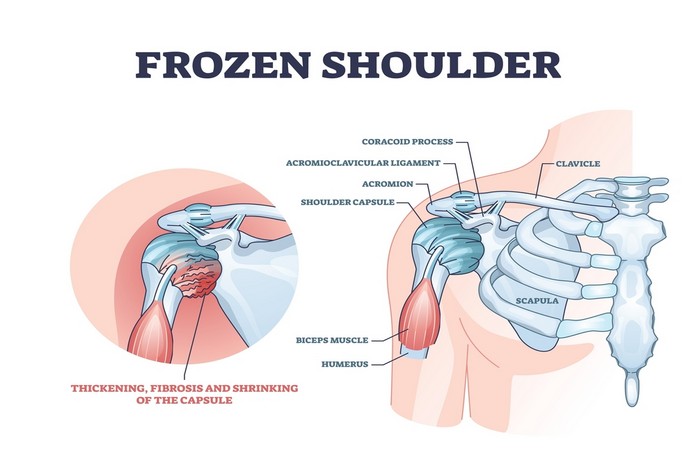Frozen Shoulder

The clinical name of frozen shoulder is adhesive capsulitis, but it is used interchangeably to describe a condition where the shoulder feels stiff and painful. The exact cause of a frozen shoulder is multifactorial, and it is difficult to trace the precise reason for each patient. However, the main symptom is a restriction of shoulder movement. The patient himself can’t move the shoulder in the normal range of motion, and the doctor’s maneuvers show that passive shoulder motion is also affected. However, there is no intrinsic shoulder disorder to explain the exact reason.
The severity of frozen shoulder depends on each patient, but it is usually progressive through time. It is only diagnosed when the patient maintains the shoulder restriction in movement and pain for one month, and after that period, the pain worsens or reaches a plateau.
The most challenging aspect of this pathology is that doctors can’t find significant causes in the patient’s medical history. Radiographs and other imaging studies do not entirely explain the symptoms.
Frozen shoulder goes through three stages. Stage one is called freezing, and the main symptom is pain, which lasts up to 9 months. It is followed by stage 2, tagged as frozen, in which the main symptom is stiffening of the articulation and lasts up to 20 months. The third stage is thawing; patients experience a spontaneous resolution in 5 to 26 months.
